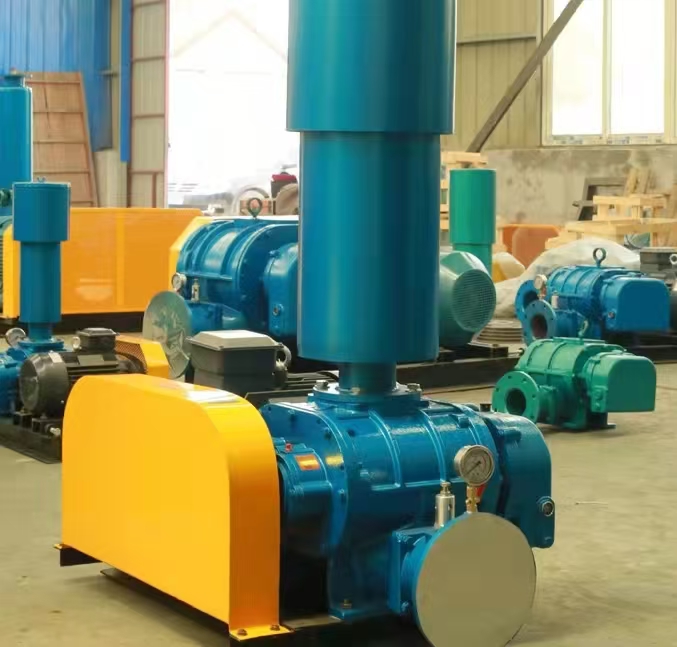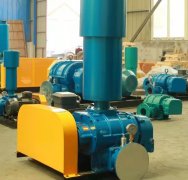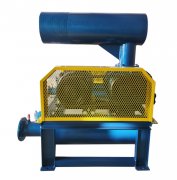Analysis of the normal range of air pressure for Roots blower
As a type of positive displacement fan, the normal pressure range of Roots blower is a parameter that needs to be carefully considered during equipment selection and use. Understanding the air pressure characteristics and normal operating range of the equipment can help ensure stable operation and avoid problems caused by overpressure or low-pressure operation.
Basic concepts of normal range of air pressure
The air pressure of a Roots blower usually refers to its outlet pressure, commonly expressed in kPa (kilopascals) or kPa (kilopascals). The rated working pressure range of different models of Roots blowers varies. The single-stage working pressure of standard Roots blowers is generally between 9.8-58.8kPa, which is suitable for most conventional application scenarios. The high-pressure single-stage fan can reach 58.8-98kPa, while the special model with a two-stage series design can achieve a working pressure of 98-196kPa.
It should be noted that the actual working pressure of Roots blower is not determined by the equipment itself, but depends on the resistance characteristics of the pipeline system. The device will automatically adapt to system resistance within its capability range, but it must not exceed the allowable working pressure.
Key factors affecting air pressure
System resistance is the main factor determining work pressure. Including pipeline friction resistance, valve local resistance, and terminal equipment resistance. The length, diameter, and number of bends of the pipeline will all affect the total resistance of the system. The requirements of terminal devices, such as aerator resistance and liquid level height, are also important factors.
The performance parameters of the device itself can also affect the air pressure performance. The precision of the gap between the rotor and the casing directly affects the amount of internal leakage, which in turn affects the pressure holding capacity. The precision of gear transmission ensures synchronous operation of the rotor, which affects the sealing effect. The power and speed characteristics of the motor determine the upper limit of the equipment's capacity.
Criteria for determining abnormal air pressure
When the work pressure remains below the normal range, it may indicate that there is an abnormality in the system. Common reasons include clogged intake filters, pipeline leaks, and excessive rotor wear and clearance. Low pressure can lead to insufficient air flow, affecting the process effect, and the equipment may deviate from the working area, increasing energy consumption.
Pressure exceeding the rated range is considered a hazardous working condition. Possible causes include incorrect closure of export valves, pipeline blockage, or unreasonable system design. Overpressure operation will significantly increase the motor load, leading to overheating or even burning, while accelerating mechanical component wear, seriously affecting equipment life.
The correct method for adjusting air pressure
Adjusting work pressure should be achieved by changing the system resistance. Optimize pipeline layout to reduce unnecessary resistance losses. Reasonably choose the pipe diameter to avoid pressure loss caused by high flow rate. Adjust the valve opening of the system to change the local resistance characteristics.
It should be noted that increasing pressure by closing the outlet valve should not be done, as this method increases energy consumption and may overload the equipment. For situations where air volume needs to be adjusted, it is recommended to use energy-saving methods such as variable frequency speed regulation.
Usage and maintenance suggestions
During daily operation, it is necessary to closely monitor the pressure readings and record the normal pressure range. When abnormal pressure is detected, it is necessary to promptly investigate the cause and not forcefully operate. Regularly inspect the resistance components of the system, such as cleaning filters and checking the condition of pipelines.
Pay attention to the condition of pressure related components during maintenance and upkeep. Check if the rotor clearance is within the allowable range. Confirm that the sealing system is intact to prevent internal leakage. Verify the pressure gauge to ensure accurate readings. These measures help to keep the equipment operating within the normal pressure range.
Selection precautions
When selecting a Roots blower, it is important to accurately calculate the required pressure of the system. Consider the demands of work pressure and leave appropriate margins. Compare device performance curves and select models with higher efficiency at commonly used operating points. Consider the possibility of future system changes and reserve pressure reserves.
For working conditions with significant pressure fluctuations, equipment with strong adaptability should be selected. For occasions with special pressure requirements, customized design may be necessary. Suggest consulting professionals for detailed system calculations and equipment selection.
In short, the normal pressure range of Roots blowers depends on the equipment model and system characteristics. Users should ensure that the equipment operates within the normal pressure range through reasonable selection, standardized operation, and regular maintenance. This not only ensures the production process requirements, but also extends the service life of equipment and reduces operating costs.



